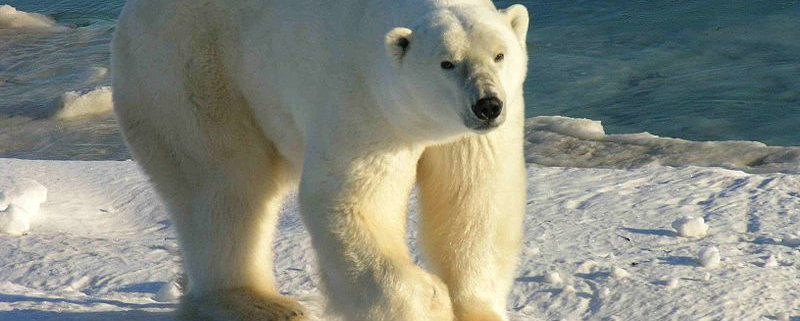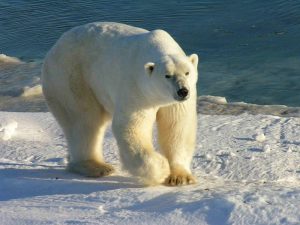Climate Change to Cause Polar Bear Population Declines
By Laura Vander Meiden, SRC Intern
Over the next 35-40 years polar bear populations have the potential to decrease by more than 30% according to an assessment by the International Union for Conservation of Nature (IUCN). The report cites climate change and the resulting loss of sea ice as the cause of this probable decline.
Polar bears are specifically built to survive the harsh conditions of the arctic. Their adaptations include two types of insulating fur, a deep layer of fat to keep warm while in the water, bumps called papillae on the bottom of their feet for grip on ice, and feeding behaviors designed for living on the ice. Ironically it is these adaptations that make polar bears most vulnerable as the climate changes.
Scientist’s primary concern is the effect melting sea ice has on the eating habits of the bears. Though polar bears have been seen to opportunistically feed on a variety of organisms, their primary source of food is ring seals which live on the edge of the ice. The seals have a very high calorie content, particularly in their blubber, which is necessary for the polar bear’s frigid lifestyle. This allows the bears to build up large fat reserves which are critical as the bears can only hunt seals when there is ice. When seasonal ice melts in the summer, the bears typically must fast, living off their fat reserves, until the ice returns in the winter.
As climate change continues the ice will melt more quickly each summer and take a much longer time to return each winter. This extends the length of time polar bears must fast, resulting in higher chances of starvation. Melting ice and the subsequent reduced access to food can also lead to an overall decrease in body condition, reduced survival rates of cubs, loss of denning habitat and increased drowning as the bears attempt to swim between ice floes.
Polar bears are found on four different sea ice regions. The populations found in the region where ice is the most seasonal are at present in the most danger from climate change. Also vulnerable are populations in the divergent ice region where ice forms along the shore, but is not always connected to pack ice further out to sea. Safest are populations in the region where convergent ice connects the bears to pack ice and the archipelago region where ice remains year round. The latter region is expected to be the final refuge of the bears, but unless carbon dioxide emissions are reduced even this ice will be melted in 100 years.

Of 19 subpopulations 3 are declining, 6 are stable, 1 is increasing, and 9 have insufficient data to make a determination. Map via Norwegian Polar Institute.
While the situation for the polar bears appears dire, scientists have not completely lost hope. If significant reductions are made in greenhouse gas emissions, the amount of time before the sea ice melts could be extended. However scientists warn that action must be taken soon, since once a tipping point is reached sea ice will decrease rapidly and no amount of emission reduction will be able to stop the ice from melting.





Leave a Reply
Want to join the discussion?Feel free to contribute!